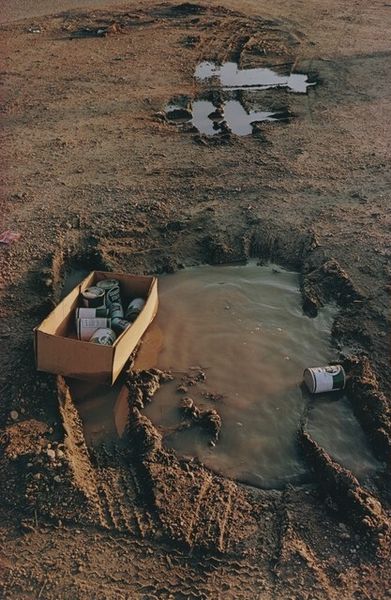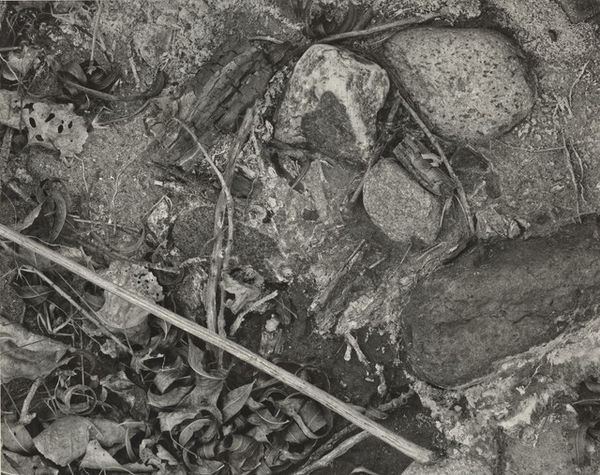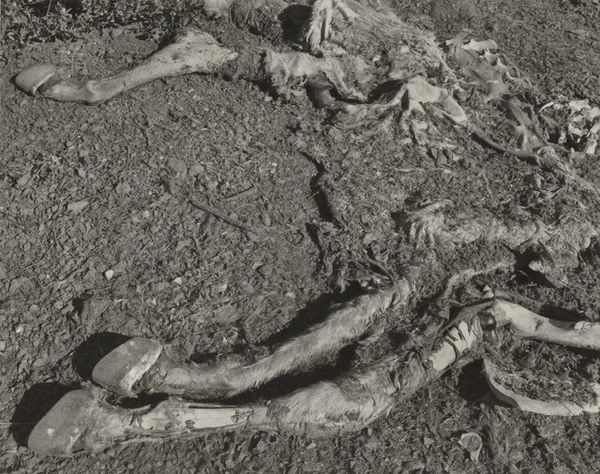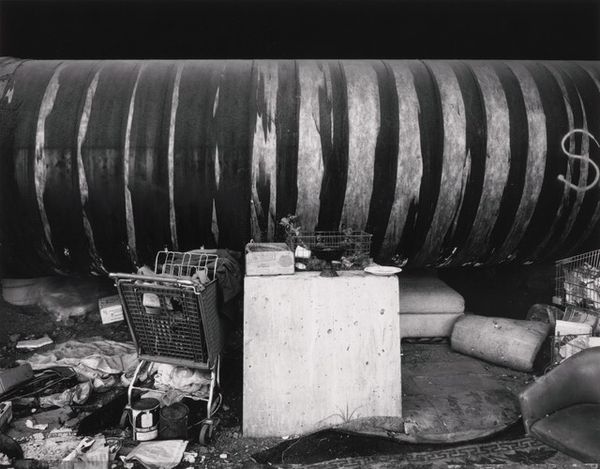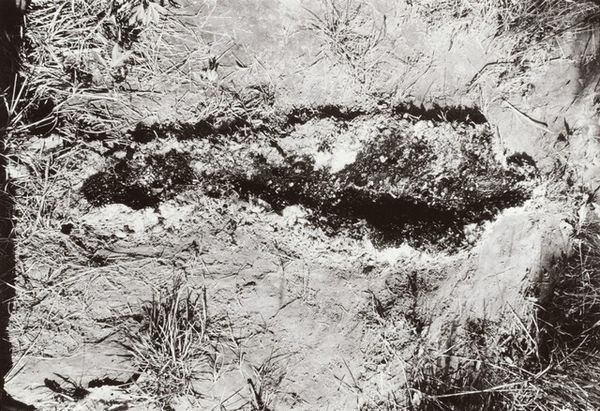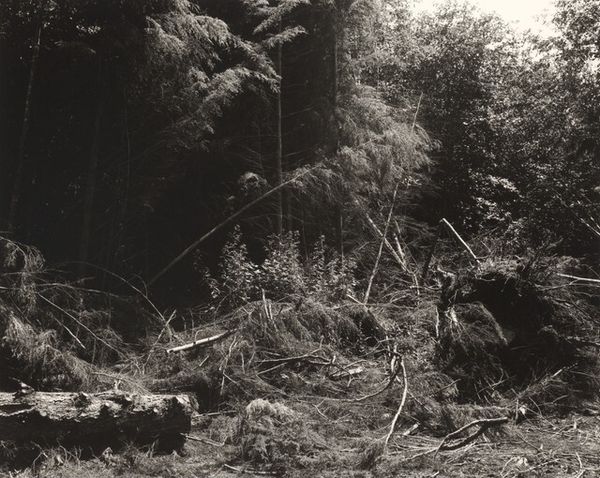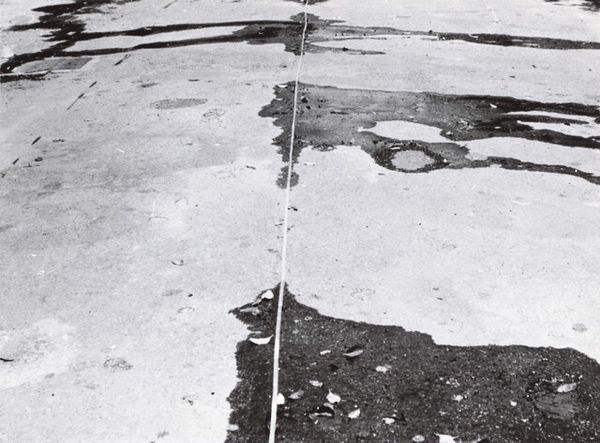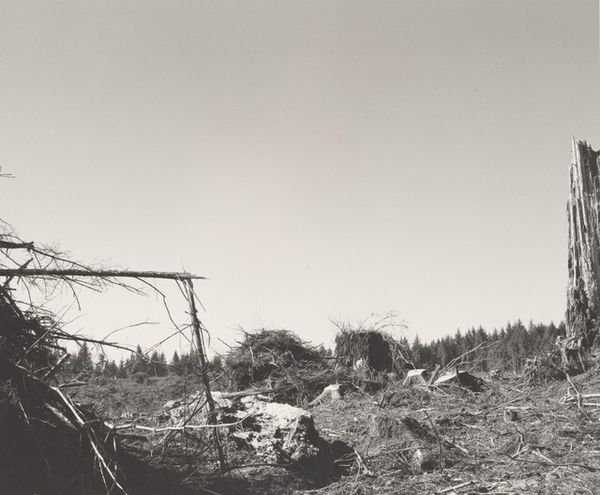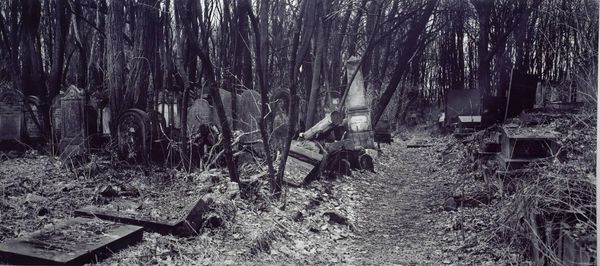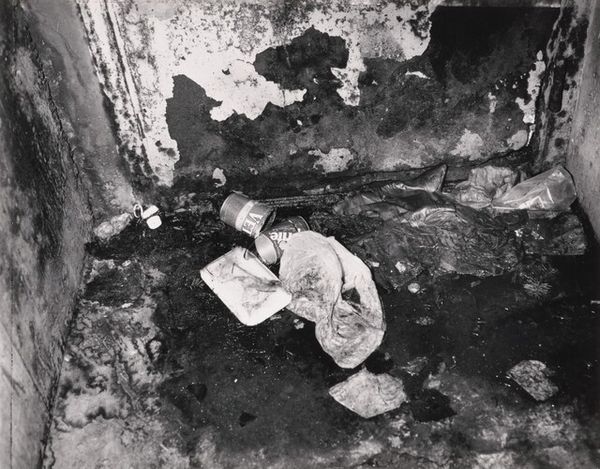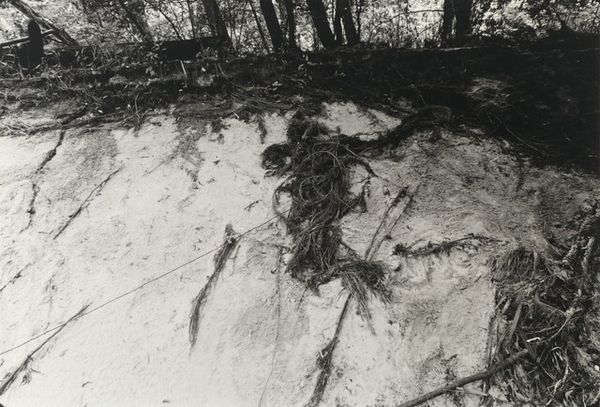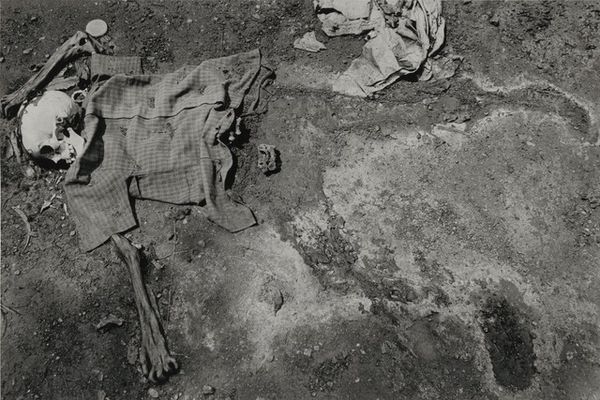
gelatin-silver-print, photography, gelatin-silver-print
#
still-life-photography
#
gelatin-silver-print
#
landscape
#
monochrome colours
#
photography
#
gelatin-silver-print
#
ashcan-school
#
realism
#
monochrome
Dimensions: 7 1/8 x 9 5/16 in. (18.1 x 23.65 cm) (image, sheet)18 x 14 3/4 in. (45.72 x 37.47 cm) (mount)
Copyright: No Copyright - United States
Editor: This is Walker Evans’s “Child’s Grave,” a gelatin-silver print that was possibly taken sometime between 1936 and 1971. I find it immediately striking—the raw earth, the tilted headstones, and the general disarray give a very visceral sense of grief. What stands out to you in this piece? Curator: What resonates with me is the social commentary inherent in its simplicity. Evans, linked to the Ashcan School and its realism, often focused on documenting American life, particularly during times of hardship. Looking at this image, consider the socioeconomic implications: Who could afford elaborate memorials? Who was systematically denied proper mourning? The act of remembering becomes politicized. Editor: So, the way the grave is presented is saying something about class, perhaps? Curator: Exactly. Think about the placement of the vases, the modest markers. Evans is showing us not just a grave, but a system of inequality embedded within something as universally human as death. How does the lack of identifying markers further amplify this reading? Editor: It almost feels like anonymity is being imposed even in death, erasing individuality. Was this intentional on Evans’ part, or is that too strong a claim? Curator: I think that’s a valid interpretation. Consider his other works; Evans often photographed subjects without their direct consent, raising questions about representation and power. This image forces us to confront uncomfortable truths about who gets remembered and how. Ultimately, photography like this compels us to consider death and its commemoration through a socio-political lens, broadening the narrative from an individual tragedy to structural inequalities. Editor: This definitely changes how I see the photograph. It’s not just a sad image; it's a commentary. I will now consider how photographic representations perpetuate narratives of marginalization. Curator: Precisely! Art can be a catalyst for critical dialogue.
Comments
No comments
Be the first to comment and join the conversation on the ultimate creative platform.
